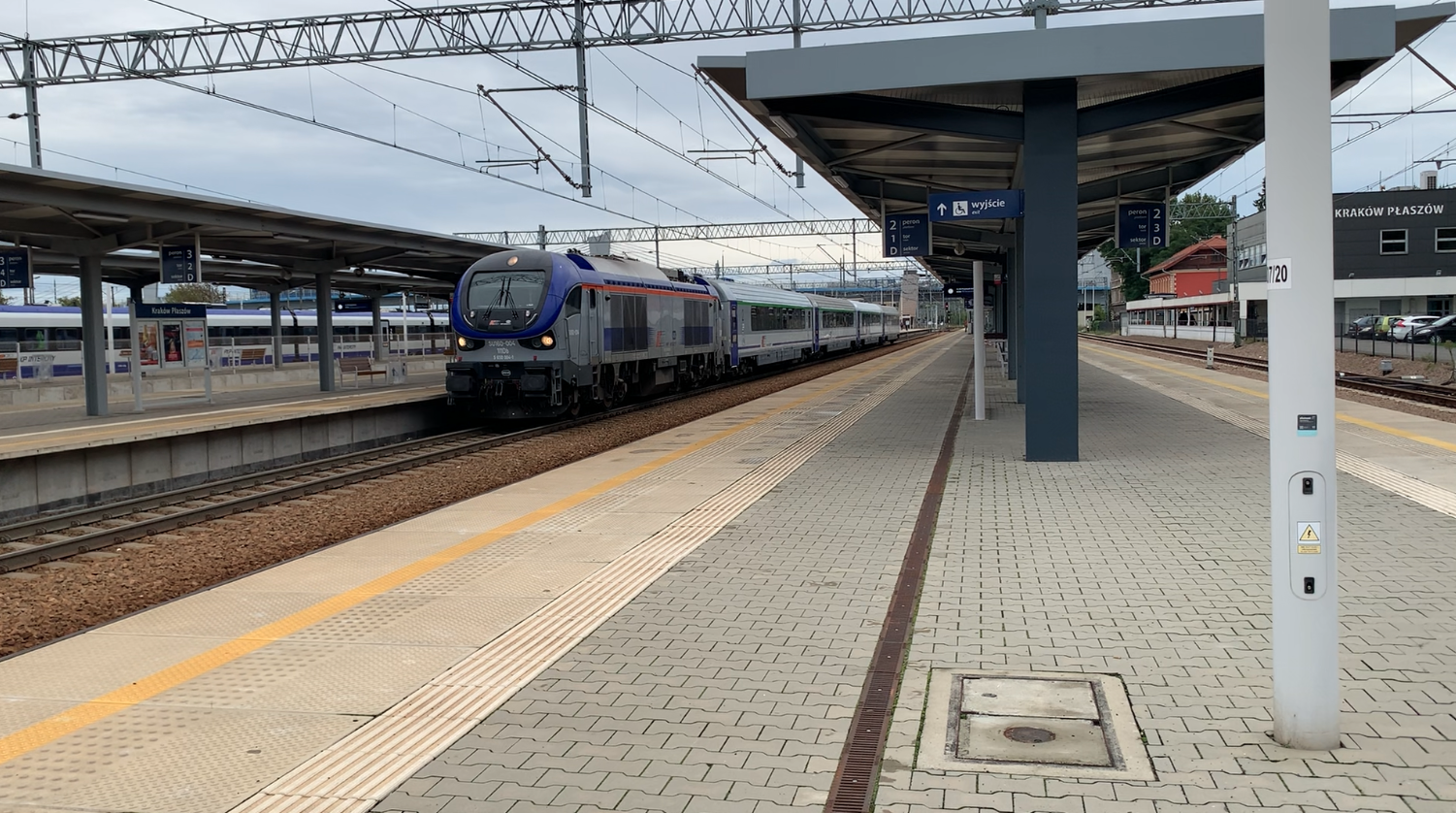Kraków 2025-09-23
PESA SU160 diesel locomotive, 111Db.
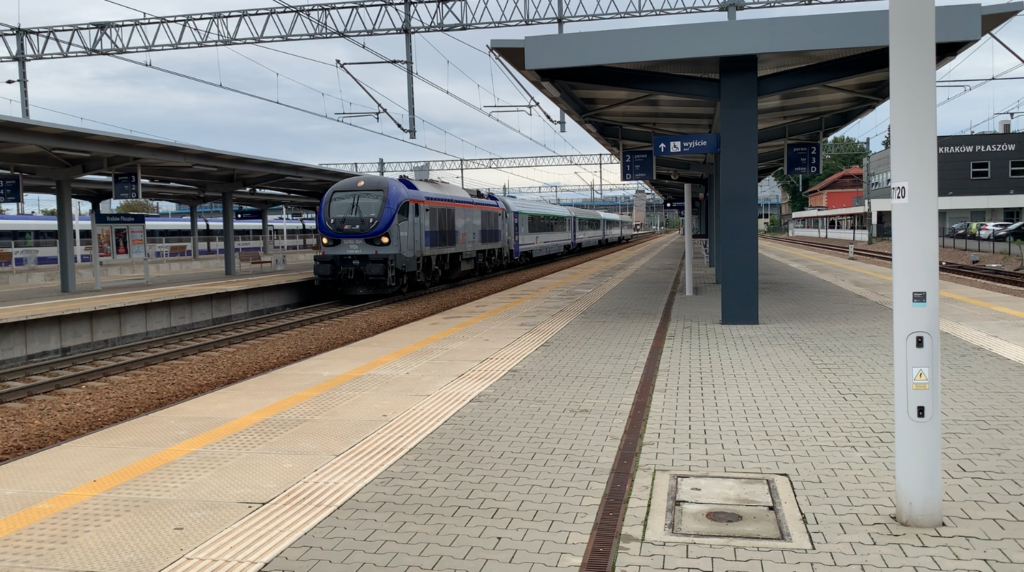
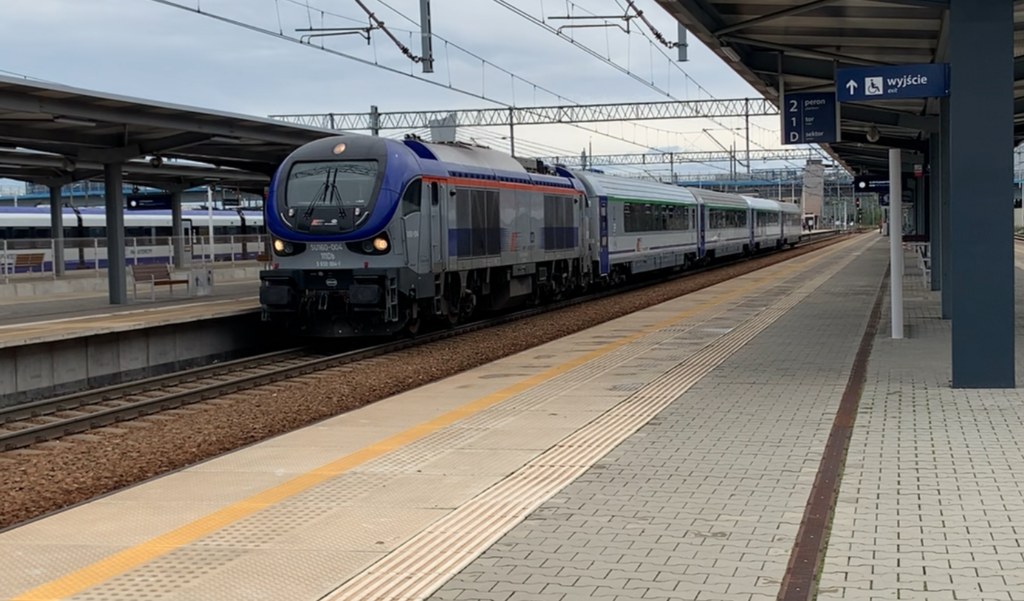
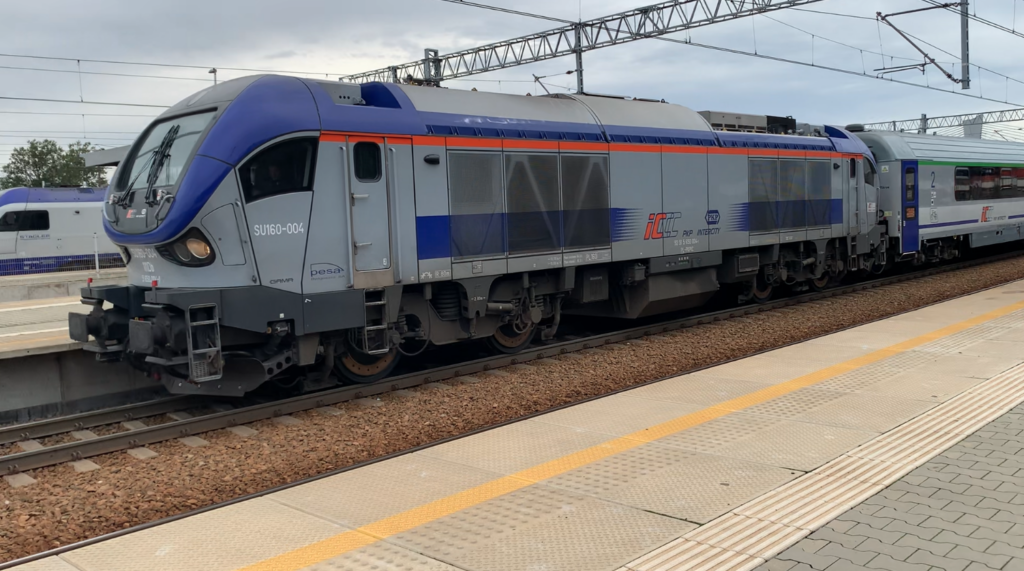
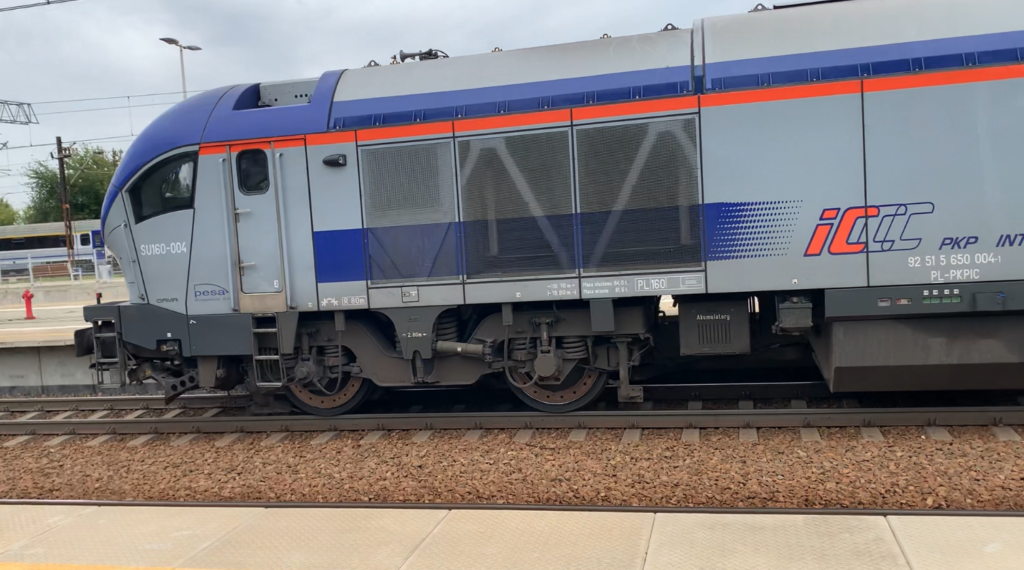
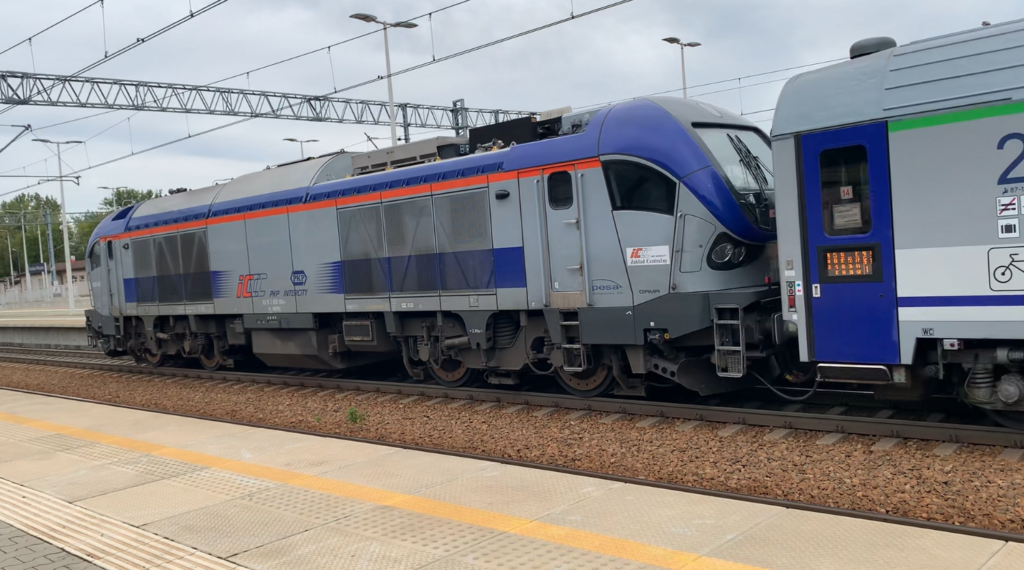
In 2012, the PESA 111Ed electric locomotive, manufactured by a company operating in Bydgoszcz, was unveiled. PESA and NEWAG are currently two major Polish companies producing locomotives, electric multiple unit (EMU), multiple unit (SZT), and railcars. Both companies produce rail vehicles that successfully compete in the global market. They offer excellent value for money and are highly reliable. The PESA 111Ed Gama locomotive was the first in a family of locomotives: electric, diesel, diesel-electric, and multi-system. Most of them are universal, meaning they can be used for both freight and passenger trains.
The PESA 111Db Gama diesel locomotive, with a three-engine drive, was built in July 2014. The locomotive was unveiled at a trade fair in Gdańsk. At that time, a contract was signed between PESA and PKP InterCity for the purchase of 10 diesel locomotives. The locomotives were intended for long-distance train service. They were intended to replace the aging Fiat SU45 and SU46 locomotives, which had been developed and manufactured at HCP. The first 111Db locomotive for PKP InterCity began testing in May 2015. The locomotive began line service in June 2015. The final, 10th unit was delivered in November 2015. The locomotives were designated SU160. The designation suggests a top speed of 160 km/h, although the locomotive was actually certified for 140 km/h. Of course, the locomotive is capable of running trains at 160 km/h, as this speed was achieved during testing.
The prototype, designated 111Db-001, initially remained the property of PESA and was used for various tests. In June 2015, it was sold to Pol-Miedź Trans, and later, in May 2016, to Orlen KolTrans. Eleven locomotives of this type have been built by 2025.
The first months of operation revealed the locomotive’s infantile problems. Low temperatures caused problems with the diesel engine. Since the carrier was very happy with the warranty, the locomotive was immediately returned to the manufacturer for diagnosis and repair. According to PESA, these defects were due to manufacturing defects. However, most line service interruptions were, and are, caused by accidents at level crossings caused by irresponsible drivers. For example, on February 3, 2021, locomotive SU160-009 suffered serious damage in a collision with a truck near Grajewo.
The engine is powered by a Rolls Royce MTU 16V 4000 R84 diesel engine. Engine power is 2,400 kW, 3,265 hp. The engine has 16 cylinders.
Bo’Bo’ axle arrangement. Electric transmission. Maximum speed: 140 km/h. 4 x 570 kW electric traction motors. Kerb weight: 84,000 kg. Length: 19.80 m. Width: 3.00 m. Electric heating for the engineer’s and passenger cabins. MZT HEPOS service brakes.
Locomotive SU160-004. Serial number: L391BNA005. The locomotive was built in 2015. Painted blue and gray. On May 30, 2021, on the line near Kętrzyn, at a level crossing, a passenger car collided with a Białystok-Gdynia train. Three people died in the car, and a fourth was hospitalized in serious condition. The locomotive sustained minor damage. On January 19, 2022, on the line near Siedlce, at a level crossing, a truck collided with a Białystok-Warszawa Wschodnia train. The locomotive was severely damaged. The cab was crushed, but the driver survived. In April 2024, the locomotive underwent a level P4 overhaul.
Written by Karol Placha Hetman
